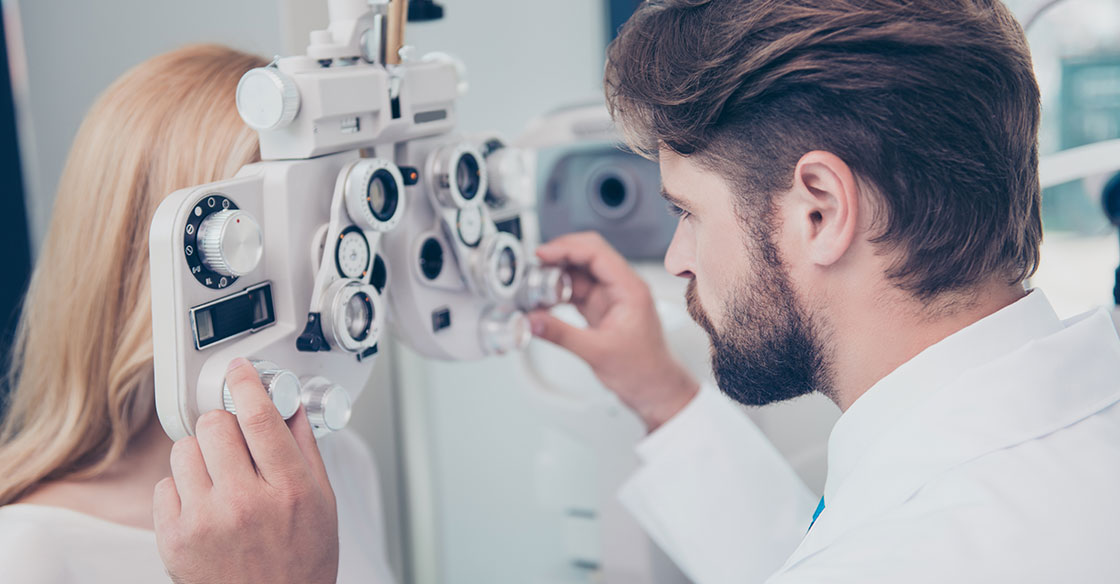What Does your Eye Prescription Mean?

Eyesight impairment can have an extremely negative impact on our daily lives. Getting your eyes tested for an eye prescription is very important. However, if you have read one, you might have wondered what those numbers and abbreviations on your optical prescription mean.
Give a look at the three most common eye conditions that require a prescription in the first place:
- Myopia (near-sightedness): makes distance vision blurry
- Presbyopia (far-sightedness): makes nearby objects blurry
- Astigmatism: light focuses on many spots on the retina causing vision blurry
All the above conditions are refractive errors that simply mean your eyes have trouble focusing light and need to be corrected.
Understanding your Eye Prescription
Understanding your optical prescription is easier than you think. When you take a look at your prescription, at first you might be curious to know what “OD” and “OS” mean. They represent the abbreviations for the Latin terms oculus dexter (right eye) and oculus sinister (left eye) respectively. Also, you might notice a column named “OU” which is an abbreviation for the Latin term oculus uterque, meaning “both eyes. Though these terms are traditionally used in eye prescriptions, some doctors use RE (right eye) and LE (left eye) instead of OD and OS.
Other terms and abbreviations in your eye prescription include:
Sphere (SPH)
This term represents the lens power which is prescribed to correct near-sightedness or far-sightedness and is measured in diopters (D).
- You will see (-) SPH values for short-sightedness e.g. -1.25. These glasses will have thicker edges.
- You will see (+) SPH values for far-sightedness e.g. +0.75. These lenses will have a thicker center.
Cylinder (CYL)
The cylinder identifies the degree of astigmatism you have i.e. how well or poorly your eye focuses light onto the retina (measured in dioptre sphere: DS).
- You will observe (-) CYL values for short-sighted astigmatism e.g. -0.50 or -1.25. These lenses will be cylindrical on the inside surface (closest to your eye).
- You will see (+) CYL values for far-sighted astigmatism e.g. +0.75 or +1.25.
Axis
The axis is defined with a number from 1 to 180 for e.g. an axis of 180 degrees means a patient is suffering from horizontal astigmatism. If an eye prescription includes cylinder power, it must also include an axis value, different for each eye. This is the degree of rotation required to adjust the cylinder power in front of your eyes.
- You will observe a number from 0 to 180, e.g. 137 or 51 in your prescription.
Add
This is used to correct presbyopia; which is the added magnifying power applied to the bottom part of multifocal lenses. ADD values are used to create distance glasses, reading glasses and multifocal glasses.
- You may observe (+) ADD values, e.g. +1.50, +2.00 in your prescription.
Prism
This is the extent of prismatic power, measured in prism diopters (when written freehand, it is denoted as “p.d.” or a superscript) and prescribed to correct eye alignment problems. Prism diopters are mostly written in decimal form. Only very few eye prescriptions include prism (e.g. 0.5).
Additional Information about your Eyeglass Prescription
Your eye prescription may contain specific lens recommendations like anti-reflective coating, photochromic lenses and/or progressive lenses for the best vision correction possible. Also, adjusting glasses according to your optical prescription is important for your comfort and visual health. Glasses and contact lens prescriptions are different, as an eyeglass prescription is for the purchase of eyeglasses only and does not contain some information that is important to a contact lens prescription.
Understanding your eye prescription and keeping up with suggested usage are very important steps you can take to ensure optimal eye health. Apart from knowing the abbreviations in your eyeglass prescription, you also need to have a little idea about your eye anatomy and function to know the importance of your eye.
